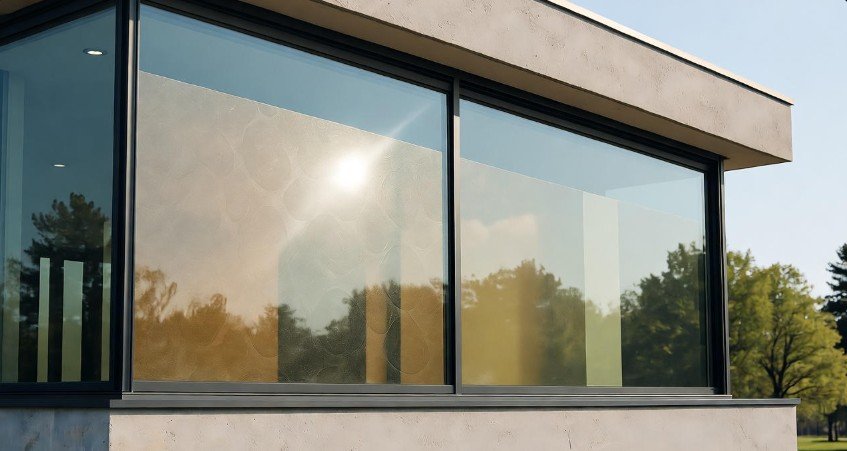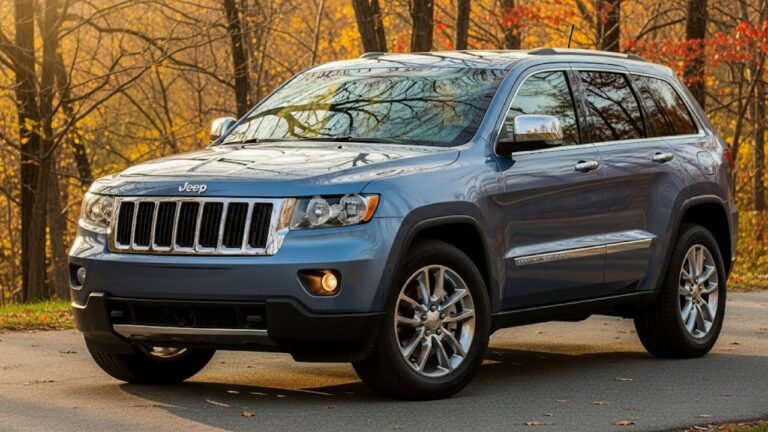Do Window Tints Go On The Inside Or Outside? (Complete Expert Breakdown)
![Do Window Tints Go On The Inside Or Outside? (Complete Expert Breakdown) 1 Window Tinting Laws in Virginia [Updated, 2023] What Every Driver Needs to Know Before Hitting the Road](https://aautomotives.com/wp-content/uploads/2025/10/Window-Tinting-Laws-in-Virginia-Updated-2023-What-Every-Driver-Needs-to-Know-Before-Hitting-the-Road-1.jpg)
When it comes to window tinting, one question keeps popping up: Do window tints go on the inside or outside? It sounds like a small detail, but the answer can completely change how your tint performs, how long it lasts, and even how easy it is to maintain.
If you’ve ever watched someone install tint film, you might have noticed them carefully peeling and sticking a transparent layer on the inside of the window. That’s not by accident. In most cases, window tints are installed on the inside — but there’s more to the story. There are special cases where an exterior installation makes more sense.
In this guide, I’ll walk you through everything you need to know — from why most tints go on the inside, to when you might choose an outside tint instead. We’ll explore pros, cons, installation tips, and maintenance advice, all in simple language. Think of it like having a friend who’s already made all the mistakes, so you don’t have to.
Understanding How Window Tints Actually Work

Before we dive into where tints go, let’s quickly understand what they do. Window tint films are thin, multi-layered sheets of polyester or ceramic material that adhere to glass surfaces. Their main job? To block UV rays, reduce glare, and keep heat out.
When sunlight hits your windows, tint films act as a shield. They absorb or reflect part of the light, keeping your interior cooler and more comfortable. They also reduce fading on upholstery, increase privacy, and make your vehicle or home look sleeker.
But here’s the key: for tints to do all that effectively, they need to stay protected from the elements. Rain, dirt, and wind can wear down tint films over time. That’s exactly why most tint films are installed on the inside of the glass — it’s safer there.
Still, some commercial or heavy-duty applications use exterior tints because they’re designed to handle extreme exposure. These are more expensive and typically used for special purposes.
Why Window Tints Are Usually Installed on the Inside
If you’ve ever wondered, “Do window tints go on the inside or outside?” — the short answer is, inside. And there are several good reasons why.
First, inside installation protects the film from weather damage. When tint sits on the outer surface, it’s directly exposed to wind, dust, and UV rays. Over time, these can cause the film to fade, peel, or crack. On the inside, however, the glass itself acts as a natural barrier.
Second, it’s easier to install tints on the inside. You don’t have to worry about outdoor conditions like wind or rain interfering with the process. The film adheres better, and installers can work with more precision.
Third, inside tints are simpler to replace if needed. You can easily peel them off and reapply new film without dealing with outdoor grime or damage.
Let’s summarize the main advantages in a quick table:
| Reason | Why It Matters |
|---|---|
| Protection from weather | Keeps the tint from fading or peeling early |
| Easier installation | Reduces errors and air bubbles |
| Longer lifespan | Shielded from UV and rain |
| Cleaner look | No dirt buildup under edges |
| Easy replacement | Safer for DIY or reapplication |
That’s why, whether you’re tinting your car windows or home glass, professionals almost always recommend interior application.
The Inside vs. Outside Debate: Which Is Right for You?
There’s been an ongoing debate among car enthusiasts and homeowners: should tints go inside or outside? Let’s look at both sides clearly.
Inside installation is the standard approach. It’s practical, clean, and long-lasting for most environments. But there are times when an outside tint makes sense — like for architectural windows with coatings or in cases where the glass design doesn’t allow internal application.
For example, some curved or double-glazed windows are tricky to tint from the inside, so installers use specially designed exterior-grade films that can handle weather exposure.
To make it simpler, here’s a quick comparison:
| Aspect | Inside Tint | Outside Tint |
|---|---|---|
| Durability | Protected from weather | Exposed to wind, rain, UV |
| Ease of Installation | Easier and cleaner | Harder, requires expertise |
| Heat & Glare Control | Moderate | Slightly better performance |
| Privacy | Higher (film hidden inside) | Visible from outside |
| Maintenance | Easier to maintain | Needs more care |
| Cost | Cheaper | More expensive materials |
So, while inside tints are ideal for most vehicles and homes, outside tints can still be valuable for specific needs — like reducing glare on commercial windows or enhancing energy efficiency in large buildings.
Pros and Cons of Installing Tints on the Inside
Let’s dig deeper into what makes inside tinting so popular.
Pros:
-
Easier to apply: Installing film inside means you don’t fight wind or dust. The tint sticks smoothly, and bubbles are easier to remove.
-
Better protection: Your film won’t face harsh rain, dirt, or direct scratches from outdoor debris.
-
Cleaner aesthetics: Inside tints look sleek and hidden, keeping your vehicle or home’s exterior neat.
-
Simpler maintenance: Cleaning is a breeze, and there’s less risk of accidental peeling.
Cons:
-
Limited film types: Not all tints are meant for indoor application. Some advanced films designed for glare or heat rejection are exterior-only.
-
Potential peeling over time: In humid or poorly installed cases, air pockets or bubbles can form inside, requiring touch-ups.
-
UV wear from interior heat: While the tint blocks UV light, long-term heat inside can still affect the film slightly.
Still, most people agree that these drawbacks are minor compared to the convenience and longevity inside tints offer.
Pros and Cons of Installing Tints on the Outside
Now, let’s look at outside tint installation — a less common but sometimes useful approach.
Pros:
-
Improved heat rejection: Exterior tints block sunlight before it hits the glass, which can slightly improve cooling efficiency.
-
More durable film options: Exterior films are often thicker and UV-resistant. They’re engineered to handle rain, wind, and sunlight.
-
Wider variety: There’s a broader range of colors, finishes, and reflective coatings for commercial or decorative use.
Cons:
-
Trickier to install: Outdoor conditions make installation more complex. Even a light breeze can trap dust under the film.
-
Prone to damage: Being on the outer surface, it can easily get scratched by debris, tree branches, or car washes.
-
Reduced privacy: Since the film is visible, it may not blend well aesthetically, especially for cars.
-
Higher cost: Special weatherproof films are expensive and require professional handling.
So, while outside window tints do have performance advantages, they’re not practical for most people unless you’re dealing with special architectural or energy-control needs.
When Exterior Tints Might Be the Better Choice
Although most people go for inside tints, certain scenarios make outside tints worth considering.
For instance, if your windows have low-E coatings, applying tint inside might cause reflection or damage. In those cases, an exterior tint film designed for coated glass works best.
Similarly, some large commercial buildings and storefronts use outside tints to control glare and heat because the films can be customized for heavy sun exposure. They’re thicker, weather-resistant, and maintain optical clarity even in harsh conditions.
You might also see exterior automotive tints on performance or racing vehicles, where maximum heat rejection is needed. However, these are typically installed by professionals using specialized materials.
In short, outside tinting is a great option when:
-
The glass has internal coatings
-
The window shape makes inside tinting hard
-
You want maximum heat reflection
-
You’re using industrial-grade tint films
For everyday drivers or homeowners, though, inside tinting still remains the gold standard.
Step-by-Step Guide to Installing Window Tints Correctly
Now that you know where tints should go, let’s look at how they’re installed. Even if you’re not planning to do it yourself, understanding the process helps you ensure it’s done right.
Here’s how professional installers typically handle it:
1. Prepare your tools:
You’ll need tint film, a razor or utility blade, a squeegee, spray bottle with soapy water, lint-free cloth, and a measuring tape.
2. Measure your window:
Measure each window precisely and cut your film slightly larger. It’s easier to trim excess than fix gaps later.
3. Clean thoroughly:
Any dust or debris under the film will cause bubbles. Clean with a glass-safe cleaner and wipe dry.
4. Spray soapy water:
A light mist allows the film to slide and align properly before sticking.
5. Apply the film:
Peel the backing and slowly press the film onto the glass, smoothing with a squeegee from the center outward.
6. Trim excess:
Use a razor to cut away extra film for a perfect edge.
7. Remove bubbles:
Go over the surface again with your squeegee to remove any trapped air.
8. Let it cure:
Leave it untouched for 24 hours before rolling windows up or down.
These steps apply whether you’re tinting a car window or a home window, but always follow your tint manufacturer’s directions for best results.
Common Mistakes People Make When Tinting Windows
Even though tinting looks simple, small mistakes can lead to big problems later. Here are a few you should avoid:
-
Skipping cleaning: Dust or oil under the film causes bubbling that can’t be fixed easily.
-
Applying in heat or direct sunlight: High temperatures make the adhesive stick too quickly.
-
Not measuring correctly: Uneven cuts ruin the look and can cause peeling edges.
-
Ignoring curing time: Rolling windows too soon can shift or wrinkle the tint.
-
Choosing cheap film: Low-quality tint fades fast and often turns purple over time.
Taking your time and following proper steps ensures a smooth, bubble-free result that lasts for years.
Proper Maintenance and Care of Window Tints
Once your window tints are installed, the work isn’t over. Proper care ensures they remain effective and visually appealing for years. One of the most important aspects of maintenance is cleaning. Use a soft, lint-free cloth and a gentle, non-abrasive cleaner specifically formulated for window tints. Avoid ammonia-based cleaners, which can break down the film’s adhesive and lead to bubbling or peeling.
Regularly wiping away dirt and debris prevents scratching and maintains optical clarity. Be mindful of sharp objects near the windows—keys, pens, or tools can easily damage the surface of the film. If you notice small scratches or peeling, repair them promptly before they worsen. Keeping your car in a shaded area or using a sunshade when parked outdoors also reduces heat stress on the tint, helping maintain color and adhesion over time. Proper care is simple but essential for extending the life of your investment.
Common Myths About Window Tint Placement
Many people are confused about where window tints should go due to myths circulating online. Let’s clear up a few common misconceptions:
-
Myth 1: Outside tints are always better for heat reduction.
While exterior tints can block sunlight before it hits the glass, modern interior films with advanced UV and infrared rejection often outperform exterior films for daily use. -
Myth 2: Tints installed inside are weaker.
The durability of interior tints is sufficient for most vehicles and buildings, as they’re protected from direct weather. Peeling or bubbling is usually due to improper installation, not interior placement. -
Myth 3: You can install any tint on any surface.
Not all films are compatible with exterior installation. Using the wrong film outside may cause rapid degradation or discoloration. Always follow the manufacturer’s recommendations.
Understanding the facts helps you make an informed decision and avoid costly mistakes.
Professional vs. DIY Window Tinting
When deciding on window tint placement, consider whether you’ll do it yourself or hire a professional.
DIY Tinting:
-
More affordable upfront, often under $50 for home or car windows.
-
Requires patience, precision, and the right tools.
-
Mistakes can lead to bubbles, wrinkles, or peeling.
Professional Installation:
-
Typically costs $100–$500 depending on window size and film quality.
-
Ensures proper placement, smooth adhesion, and long-lasting results.
-
Professionals can advise on inside vs outside installation, based on your glass type and desired outcome.
If you’re tinting for the first time, professional installation is highly recommended, especially for large windows or vehicles with curved glass. It reduces the risk of errors and guarantees optimal performance.
Factors to Consider When Choosing Window Tint Placement
Several factors influence whether inside or outside tinting is the best choice:
-
Climate: In areas with heavy rain, snow, or intense sunlight, interior tints tend to last longer.
-
Glass type: Low-E or coated glass may require exterior-grade films for optimal results.
-
Purpose: If privacy is a priority, interior tints hide the film from outside view.
-
Budget: Exterior films are more expensive due to durability requirements.
-
Maintenance willingness: Interior tints are easier to clean and replace when needed.
Considering these variables helps you balance performance, cost, and convenience.
FAQs About Window Tint Placement
1. Do window tints go on the inside or outside of car windows?
Most car window tints are applied on the inside for better protection, easier installation, and longer lifespan. Exterior tints are rare and typically used for specialized purposes.
2. Can outside tints damage my windows?
Using improper exterior-grade films can lead to discoloration, bubbling, or peeling. Always use films designed for exterior application.
3. How long do inside tints last?
With proper installation and care, interior tints usually last 5–10 years, depending on quality and environmental conditions.
4. Can I install window tints myself?
Yes, DIY installation is possible, but it requires patience, precision, and proper tools. Professional installation guarantees better results.
5. Will tinting reduce glare and heat?
Absolutely. Quality films, whether interior or exterior, reduce UV exposure, heat, and glare, improving comfort inside your vehicle or building.
6. Are there legal restrictions on window tint placement?
Yes, most regions have laws specifying allowable tint darkness and reflectivity. Always check local regulations before installation.
7. How should I clean my tinted windows?
Use a soft cloth and a gentle, non-ammonia cleaner. Avoid abrasive materials or harsh chemicals that can damage the film.
8. Can window tints peel or bubble?
Improper installation or exposure to extreme conditions can cause peeling or bubbling. Correct placement and following manufacturer instructions minimize these issues.
Conclusion
So, do window tints go on the inside or outside? The answer is mostly inside, and for good reasons. Interior installation protects the film from weather, ensures easier maintenance, enhances privacy, and allows for simpler DIY replacement if needed. Outside installation is reserved for special circumstances where glass type, extreme heat, or specialized film properties require it.
The key takeaway is this: quality, placement, and proper installation all matter. Choose the right film for your needs, follow manufacturer guidelines, and invest a little care in maintenance. The result is windows that look great, stay protected, and improve comfort for years.
Whether you’re tinting a car or home windows, understanding the inside vs outside debate ensures your investment pays off with maximum durability, privacy, and functionality. Properly applied window tints not only enhance aesthetics but also provide lasting protection against UV rays, glare, and heat, making them a smart choice for modern living.



![How Much Does Auto Tint Cost? [Calculator Included] 6 How Much Does Auto Tint Cost [Calculator Included]](https://aautomotives.com/wp-content/uploads/2025/10/How-Much-Does-Auto-Tint-Cost-Calculator-Included-1-768x412.jpg)
